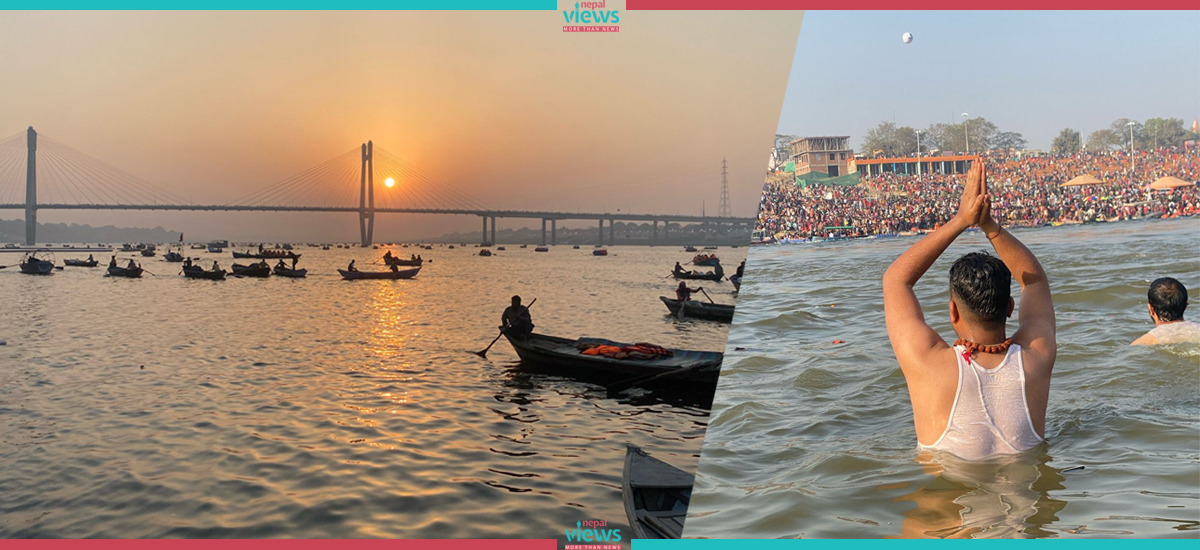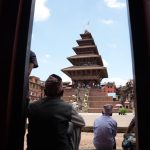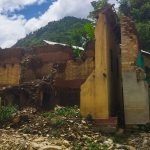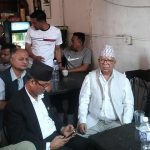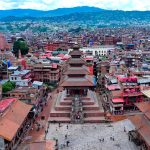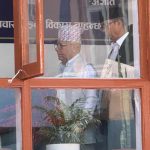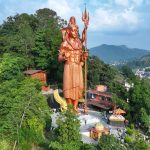The biggest Hindu festival, “Maha Kumbh 2025” has concluded. The religious fair began on January 13 and concluded on February 26.
I started experiencing numerous feelings just after the plan for the Maha Kumbh was set. The feelings of happiness, excitement, and curiosity started to emerge all at once.
The journey of Maha Kumbh, that comes once in 144 years, was not only a pilgrimage for me. But also an opportunity to closely encounter the cultural relationship between Nepal and India.
On February 21 (Falgun 9), the journey began. It all started with the Kathmandu-Bhairahawa flight. After crossing the Sunauli checkpoint, the journey moved towards Gorakhpur of Uttar Pradesh. Then, the journey of Prayagraj from Gorakhpur began.
Uttar Pradesh-filled with colors of Maha Kumbh
The vibe of Maha Kumbh was not just limited to the triple confluence. The entire Uttar Pradesh was drenched in the vibe of Maha Kumbha. Not even Uttar Pradesh could restrict the waves of the Maha Kumbha to India and it reached Nepal. The grandeur of the fair and cultural significance presented the Maha Kumbh not only as a cultural but also as a tourism festival.
The small and big towns of Uttar Pradesh were filled with the banners and posters of Maha Kumbh. The streets and markets were filled with twinkling lights. Every corner of Uttar Pradesh was radiating the energy of Maha Kumbh.
The posters, with the images of Indian Prime Minister Narendra Modi and Uttar Pradesh’s Chief Minister Yogi Adityanath, were equally promoting and welcoming millions of the pilgrims. The posters clearly showed the importance, given by the Government of India, to the Maha Kumbh.
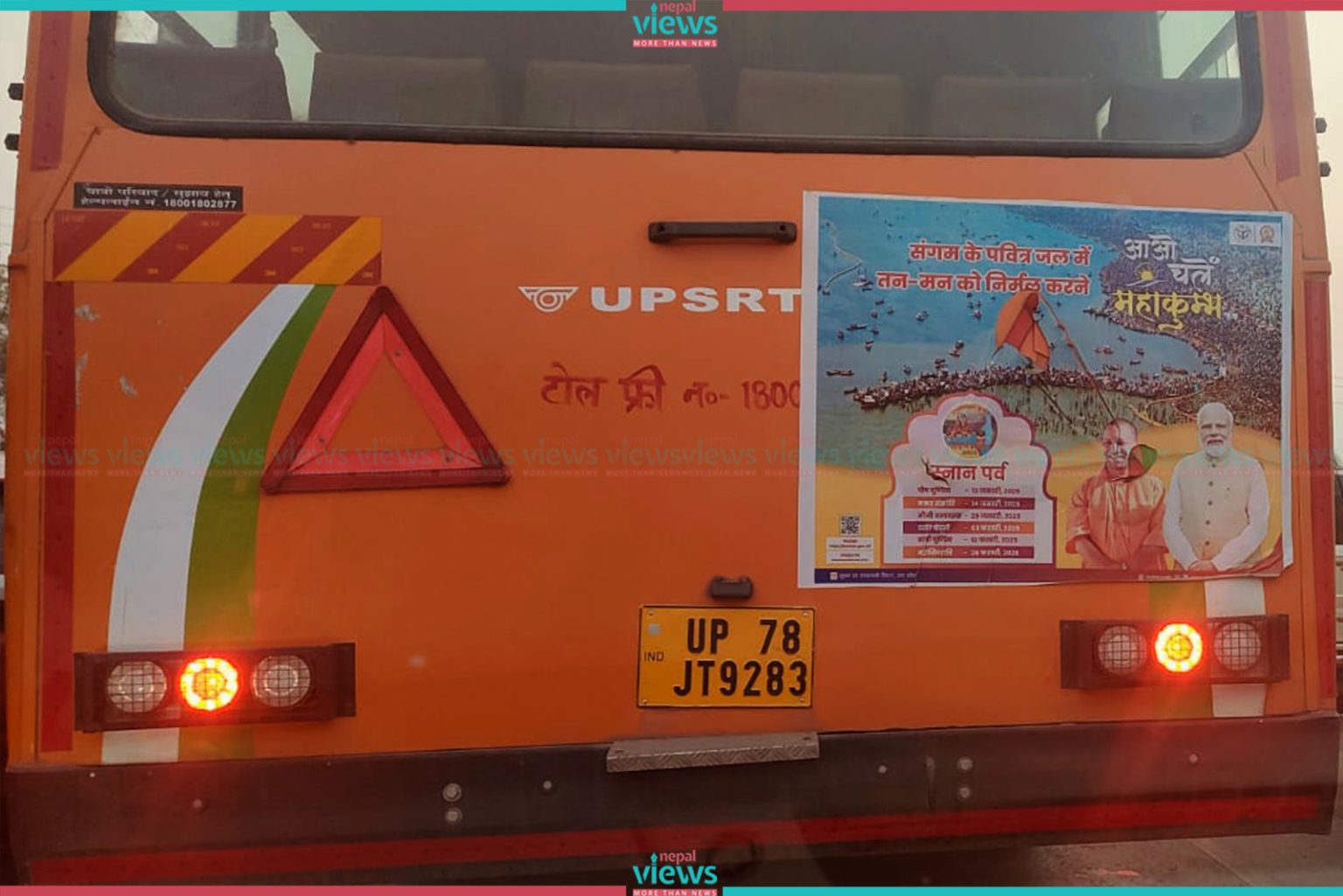
From Highways to main chowks were filled with the messages of “Maha Kumbh 2025 mein Swagat Hain”; i.e. “You are welcome to Maha Kumbh 2025.” The gates decorated with the religious emblems and attractive lights took the beauty of the urban areas of the Uttar Pradesh to the next level.
The “Dhabas” in the roads, were also prepared for the Maha Kumbh. All the Dhabas served only pure vegetarian items for the pilgrims.
All the Dhabas were neat and clean. Almost all the Dhabas were playing the religious hymns. The atmosphere makes the devotees, including me, feel the peace and internal purity.
All the pilgrims, who were going and returning from the pilgrimage, were excited and happy. The pilgrims and local people used to converse about Maha Kumbh and its cultural importance.
For some, it was only a religious journey. And for some it was a cultural experience. Few pilgrims were enjoying the taste of Matka Chiya. Some were exploring the local Indian delicacies like Litti Chokha, Pani Puri, Choley Bhature, Lassi, and ice-cream. These cuisines made the journey even more special.
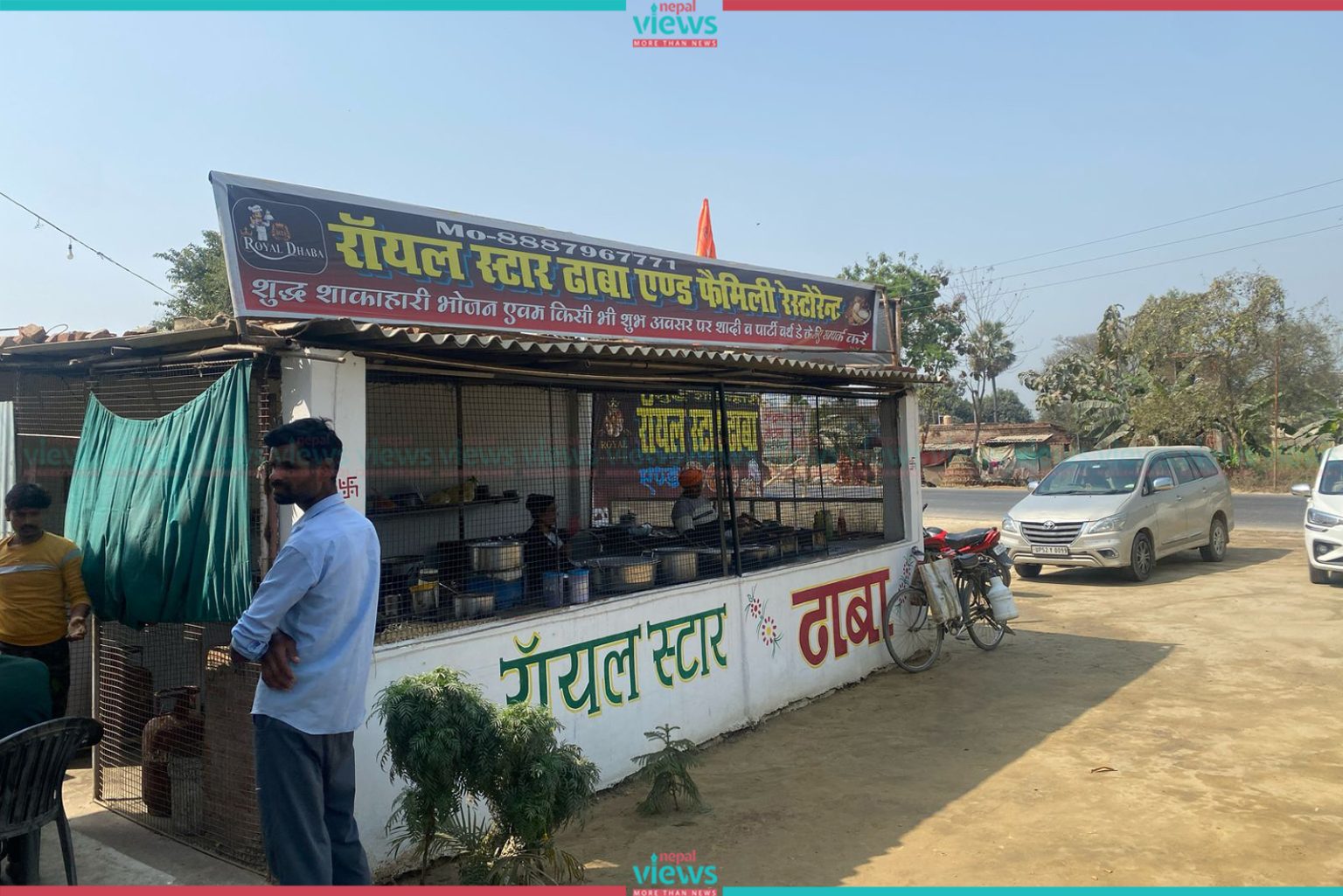
It felt like the entire Uttar Pradesh was filled with the energy of the Maha Kumbh. The energy gave the religious, cultural, and touristic experience all at once. Passing through various cities of Uttar Pradesh, I reached Prayagraj at 6 p.m.
Maha Kumbh’s Spiritual Energy and Holy Bath
It was an unbelievable experience for me to participate in the Maha Kumbh fair. This journey has made me prosperous in terms of religious, cultural, spiritual, and historical.
The next morning, after reaching Prayagraj, was dedicated to the Holy Bath. Waking up at Bramha Muhurat, at around 3 am, my journey for the Triveni Sangam “Tri Confluence” began.
But, the holy dip was not easily accessible. Thousands of people had already reached for the bath before me. Also, for security reasons, the management had arranged the bath time only after the sunrise.
So, there was no other option than waiting one hour in the boat station for the sunrise. Just after the rays of the sun started appearing towards the horizon, pilgrims started to hurry to take a bath.
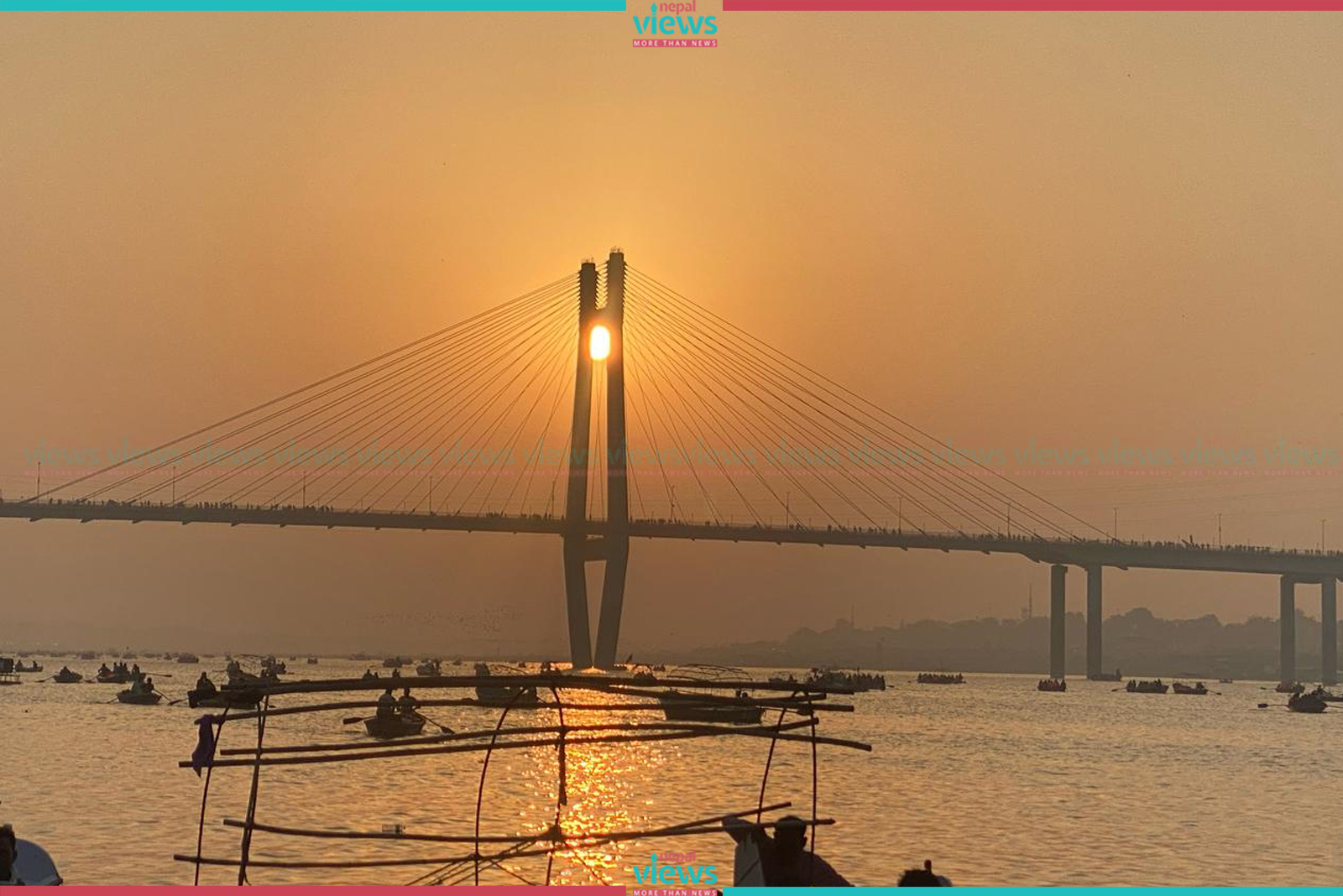
But, I was sitting on the bank of the river. Observing and capturing how the atmosphere changes in every second.
I wanted to take every changing moment with myself. How was the sky changing its color? From Black to orange to blue. How the reflection of the rising sun was glistening on the water, and touching the inner self of people.
It was a meditative moment. Even in the crowd, all the noises and chaos, I was with myself. Something different was happening. A new sensation of self-realization, awakening and getting closer to myself.
It was like a priceless moment for me as I was not only witnessing the changing colors of nature but a change within myself. For me, it was a change which can be felt but not easily explained in words.
And finally it was my turn to ride the boat. The helmsman of the boat narrated about the historical and religious significance of Triveni Sangam.
The journey of the boat was like experiencing an artist stroking his brush. The helmsman was rowing the boat but was fluent in the narration.
Rowing the boat, he said, ‘This place has a great significance in the Hindu religion. After creating the Universe, Lord Bramha performed the first Yagya here. During the time of Lord Rama’s Banbas (exile into the forest), even Lord Rama performed a Puja here. This place is also known as the place of nectar, where a few drops of nectar were spilled when demons and gods were fighting for the nectar.’
While taking the holy dip, every person was chanting and remembering god, enchanting various holy rhymes including “Har Har Gange”, “Jaya Shree Ram”, “Jaya Bhole Baba”, and “Har Har Mahadev.” I felt like my soul is getting peaceful and spiritual energy from these calls. I also felt like my soul is experiencing sanctity. I felt my body and soul were cleansed after taking a dip in the Triveni.
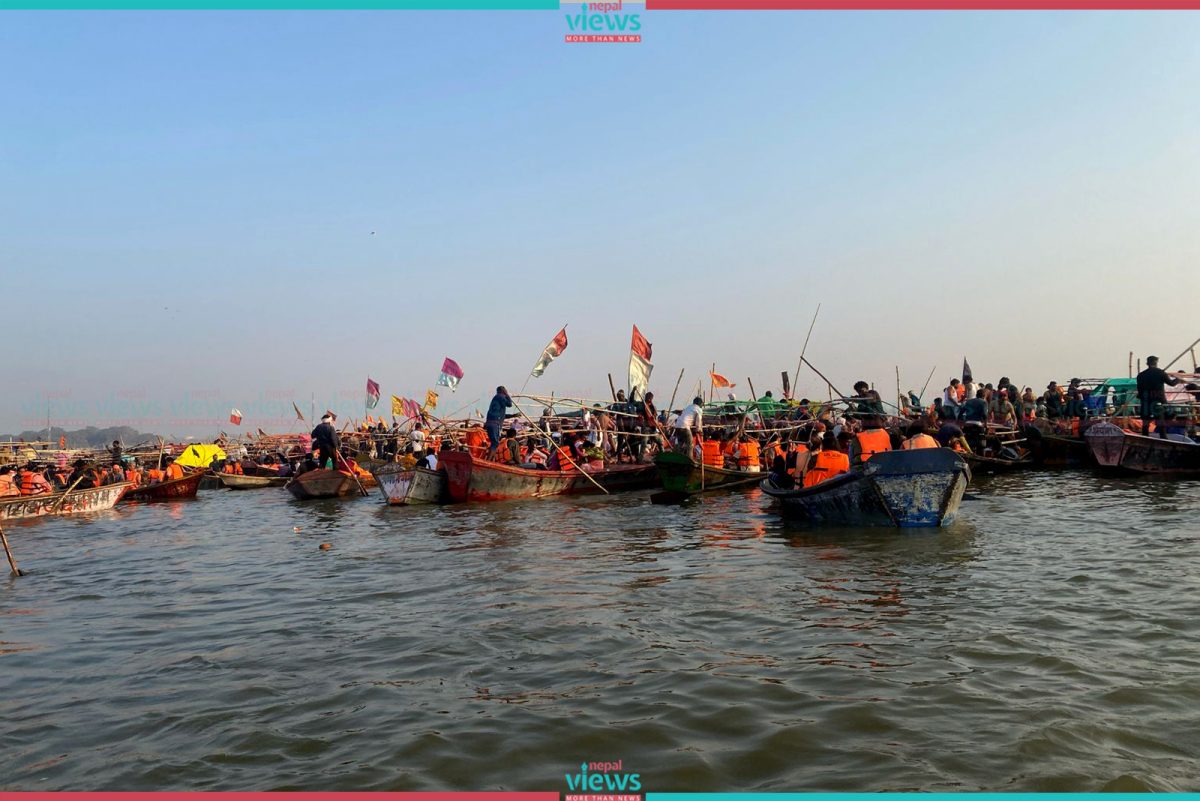
Tight Security in Air and Water
It is itself a challenging task to manage the crowd at the Maha Kumbh. But, this time, the coordination between the Indian security personnel, Uttar Pradesh Police, Paramilitary force, Navy Police, was even tighter, the security. There were tight security arrangements even in the fair premises. Drones were providing security from the sky. Security arrangements were also made for surveillance under the water.
The troops of the Navy and special teams of divers were mobilized in the Sangam premises. The life jacket was made mandatory for all the pilgrims, who were riding via boats. There were numerous checkpoints to control the crowd. The parking service was even grand. Lights were also installed in the premises of Maha Kumbha for alert security arrangements during the night.
Upon the special request of the Government of India, the Google even made special arrangements of showing the 4 thousand hectares areas of Kumbh Mela including the Ghat, temples, ring, camps, confluence, bathing site, toilets and temporary places.
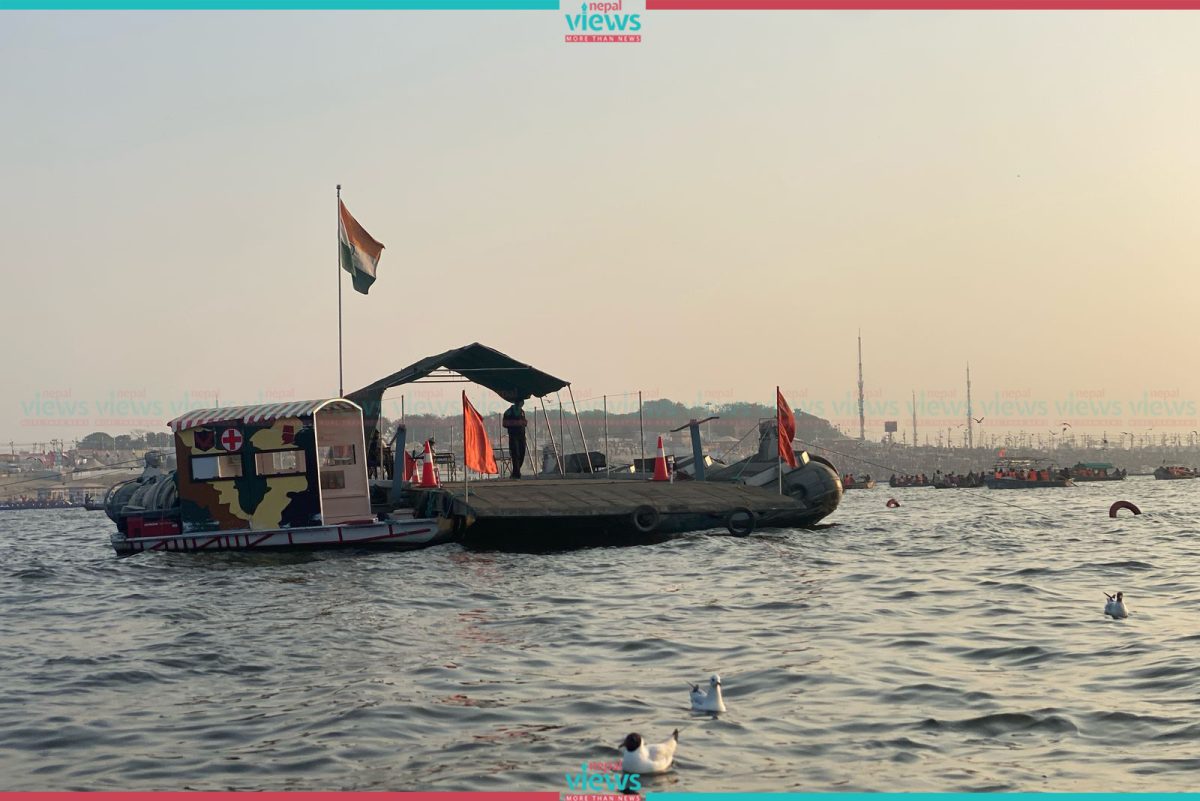
Cameras, with Artificial Intelligence (AI), for facial recognition, were also installed in several places for the security of millions of pilgrims. The 24 hours operating AI-embedded 1800 cameras were used to monitor the areas with less and dense crowd.
Internet Culture and Trolling in Nepal
For the security of the pilgrims, even inside the water, geo-tagging and GPS were used to monitor the level of the river water. The drones, with the capacity of monitoring the underwater activities, were also used 24 hours a day, round the clock.
The technologies, including the railway tickets with QR code, drone monitoring, and AI parking, were used. These technologies have not been previously used in Maha Kumbh. If any devotee drowns in water, boats with the life-saving technology and drones had been kept on standby for rescue operations.
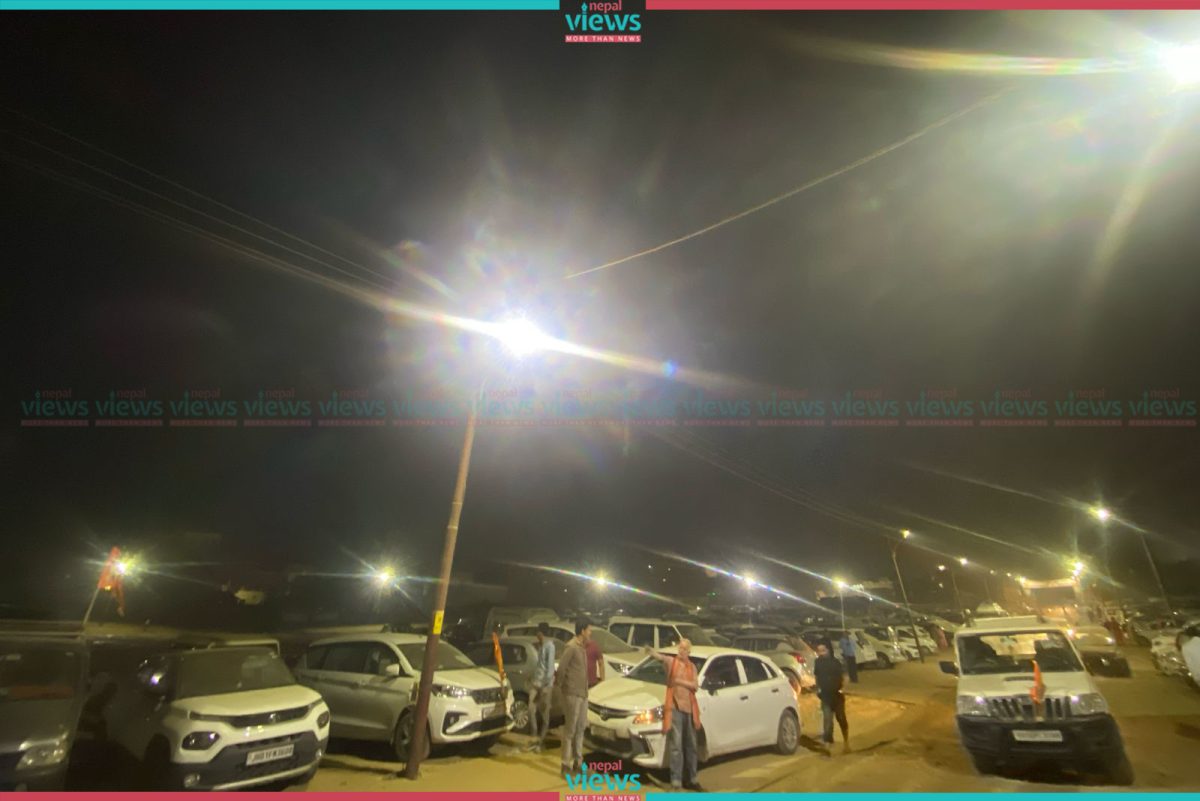
Maha Kumbh was not only for the religious bath but an amazing opportunity to closely understand the Indian cultures and rituals. The fair became even livelier with the stalls of the folk dance, religious music, hymns, religious performance, and handicraft stalls.
The special delicacies- Panchamrit, sweets, peda, chat, and different prasadams reflected the Indian cuisine culture.
Experience of Nepali pilgrims
The religious and cultural relation between Nepal and India has been unbreakable for thousands of years. Every year, thousands of pilgrims from Nepal participate in the Kumbh Mela. The number of Nepali pilgrims is the same in the Maha Kumbh. Even this year, the participation of Nepali Sadhus (Saints) was high.
The Uttar Pradesh government also provided special services to the Nepali pilgrims. The arrangements of the transportation, and the facilitation of pilgrims were made in the borders.
I even had a conversation with a few Nepali pilgrims in Maha Kumbh. Maximum pilgrims shared of gaining spiritual energy in Maha Kumbh. One pilgrim said, ‘I came to know how strong are the roots of our religion and tradition after coming here. This fare has strengthened the cultural relation between Nepal and India. It has taken our spiritual and sanatani identity to the globe.’
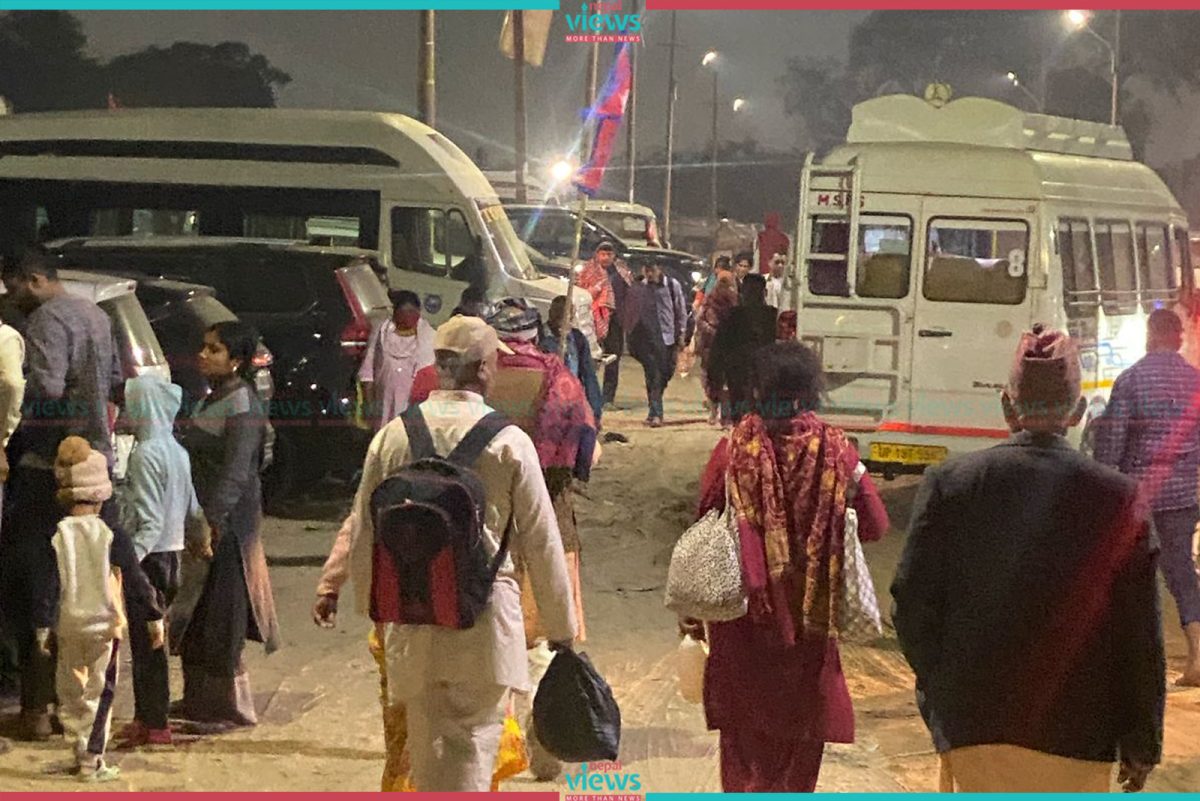
I found that Nepali pilgrims, from different parts of Nepal, chose their convenient routes to reach Maha Kumbh. Even a large number of Nepali Youths participated in this Maha Kumbh. Maha Kumbh also became an opportunity to witness various glimpses of the Nepal-like tradition, Hindu ritual and culture.
I even had an opportunity to have a conversation with the Uttar Pradesh’s Tourism Department’s Officer Binod Singh. Sharing his special connection with the Pilgrims of Nepal, he said, ‘There is a belief that such religious fair strengthens the Nepal-India relation. Because this time millions of Nepalis visited Maha Kumbha.’
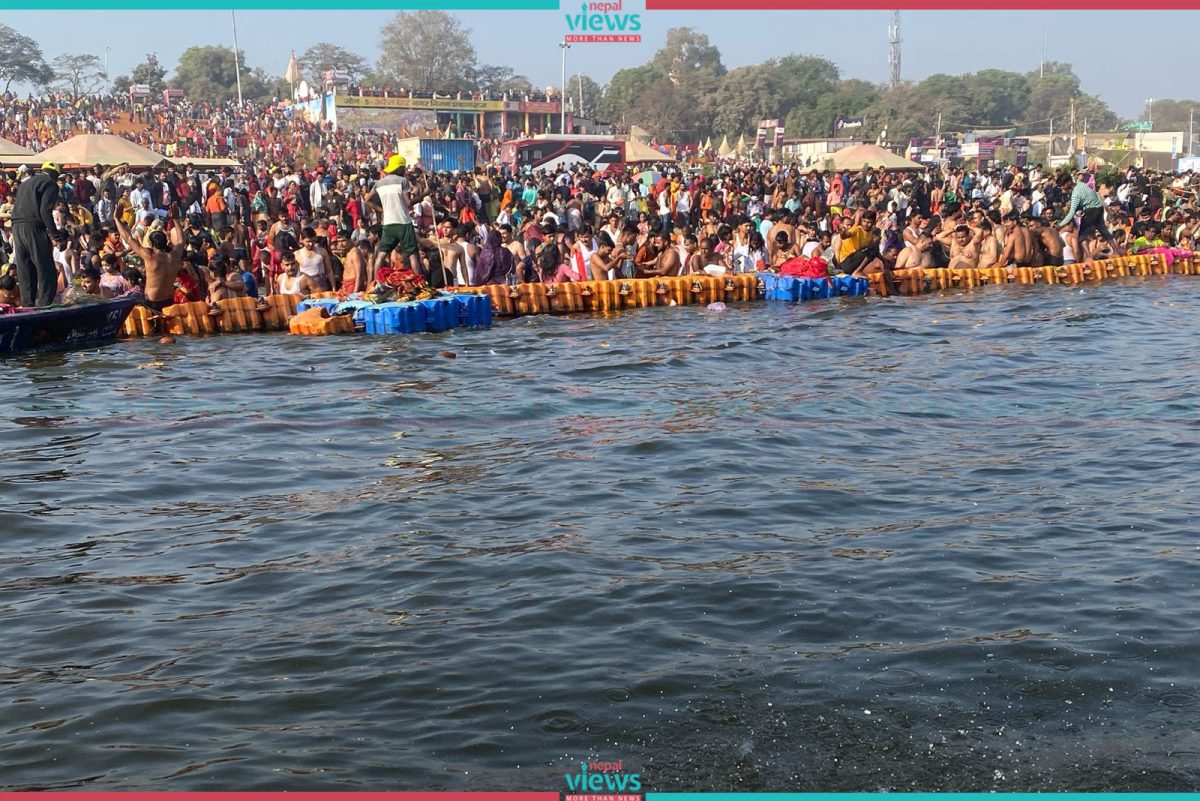
Maha Kumbh was not only a religious fair, but a marvelous confluence. It was a rejuvenating experience to attend the historical religious carnival. The United Nations has recognized the Kumbh Mela as the “Intangible Heritage of Humanity.” It was a historical experience to become part of this intangible heritage. Everyone who got the opportunity to participate in Maha Kumbha is fortunate. Those who missed this chance, there will always be a next time for sure.


